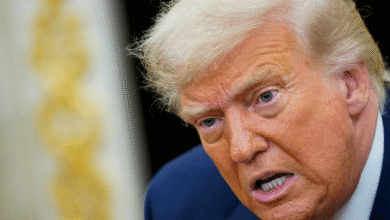
Summary
The Trump administration, with the help of Elon Musk, has launched measures to reduce the size of the federal government, resulting in significant staff cuts. Musk chairs an advisory body created to reduce federal spending. Under constant psychological pressure and frustration, tens of thousands of government employees have chosen to keep their jobs or take early retirement. Legal proceedings are currently underway challenging these measures, and a judge has ordered their suspension.
The first months of the Trump administration were marked by chaos. Trump, along with his key ally Elon Musk and his Department of Government Efficiency, waged a near-daily campaign of measures aimed at dismantling the federal government and eliminating the services and benefits that working families depend on.
It has now emerged that tens of thousands of government employees in the United States have chosen to quit their jobs rather than endure a grueling wait, according to unions, governance experts, and employees themselves. According to Reuters, federal employees have chosen to resign rather than endure what many have described as a grueling and uncertain wait before being laid off.
When President Donald Trump took office, he signed an executive order aimed at drastically reducing the size and cost of the federal government. Four months later, the massive layoffs at key agencies have still not taken place, and the courts have slowed the process. Some of Trump’s measures were reversed within days of their announcement, while others remain blocked by legal challenges, making it difficult to determine the full impact of Trump’s policies at this time.
More than 200,000 employees are expected to leave their jobs by the end of September, most through voluntary buyouts or early retirement incentives. Several employees told Reuters that constant pressure and repeated warnings from Trump administration officials were preventing them from staying, leading them to resign.
A Reuters study found that nearly 12% of the federal civilian workforce, or 2.3 million employees, has been reduced through threats of layoffs, voluntary buyouts, and early retirement. The White House and the Department of Government Efficiency, headed by billionaire Elon Musk, have overseen most of these efforts.
The Trump administration has described the federal bureaucracy as bloated and wasteful, although it has not provided a full accounting of the workforce reductions. While 75,000 employees accepted the first buyout offer, the figures for the second round have yet to be announced. Those who accept the offers will receive their full pay and benefits through September 30, often without having to work during that period.
The most significant budget cuts are targeting agencies such as the Department of Veterans Affairs (over 80,000 jobs) and the Department of Health and Human Services (10,000 jobs). Since January, many employees have reported a climate of fear, with repeated internal emails urging them to accept buyout offers, while warning them of potential layoffs if they remain.
Workers asked to come back to office
Adding to the pressure, all remote employees were ordered to return to their offices, leading to overcrowded working conditions and decreased efficiency as experienced staff left. According to Don Moynihan of the University of Michigan’s Ford School of Public Policy, management techniques reduced employee resistance and allowed for downsizing without the legal hurdles of outright layoffs.
These methods included labeling certain roles “low productivity,” asking employees to list their weekly accomplishments, and assigning them tasks beyond their training. Moynihan emphasized that “it is misleading to characterize these voluntary resignations as voluntary. Many of them felt compelled to leave.”
Charlotte Reynolds, a 58-year-old senior tax analyst with the IRS, accepted early retirement after 33 years of service. She initially rejected the initial offer in January and then left in April, citing lingering frustration. “They told us we were no good,” she said. “It was devastating.”
Union reaction
Everett Kelly, president of the American Federation of Government Employees, which represents 800,000 federal workers, criticized the administration’s approach. He cited comments by Trump’s budget director, Russ Vought, who said in 2023 that federal employees should be “shocked” when they go to work.
“The president has empowered people like Elon Musk and the DOGE team to harass and demoralize government employees, forcing tens of thousands of people out of their jobs,” Kelly said. Foot did not respond to a request for comment.
A Social Security Administration employee, who preferred to remain anonymous, said he accepted a second job offer due to the stress of daily uncertainty. He added that the pressure affected his sleep, routine, and mental health. “It turned your life upside down,” he said.
Meanwhile, several lawsuits have been filed challenging the administration’s actions. On May 9, a federal judge in California issued the broadest ruling ever, temporarily halting layoffs at 20 agencies, including the Departments of Agriculture, the Treasury, and Veterans Affairs. The court ordered the reinstatement of the fired employees, emphasizing that agency restructuring requires congressional approval.
While mass layoffs have not yet taken place, they could be imminent if the administration wins its legal challenges.







